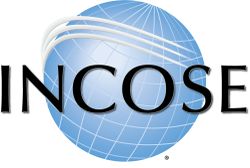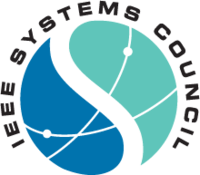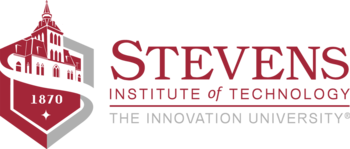Difference between revisions of "Guide to the Systems Engineering Body of Knowledge (SEBoK)"
| Line 10: | Line 10: | ||
==SEBoK Organization== | ==SEBoK Organization== | ||
| + | [[File:SEBoK_Context_Diagram_Ifezue_Obiako.png|right|thumb|652x652px|'''Figure 1 Scope of SEBoK Parts and related knowledge '''(SEBoK Original). See [[Structure of the SEBoK]] for details.]] | ||
Systems engineering has its roots in the fundamentals, principles, and models of foundational systems sciences, and associated management and engineering sciences. It is applied through the application of systems engineering processes within a managed life cycle working with a number of other management, engineering, and specialist disciplines. While traditionally applied to product development, systems engineering can also be applied to {{Term|Service_System_(glossary)|service}} and {{Term|Enterprise_System_(glossary)|enterprise}} systems. As systems engineering is a collaborative approach, working with other engineering and management disciplines and specialisms, it relies on enabling competencies and structures at individual, team, and organizational levels. | Systems engineering has its roots in the fundamentals, principles, and models of foundational systems sciences, and associated management and engineering sciences. It is applied through the application of systems engineering processes within a managed life cycle working with a number of other management, engineering, and specialist disciplines. While traditionally applied to product development, systems engineering can also be applied to {{Term|Service_System_(glossary)|service}} and {{Term|Enterprise_System_(glossary)|enterprise}} systems. As systems engineering is a collaborative approach, working with other engineering and management disciplines and specialisms, it relies on enabling competencies and structures at individual, team, and organizational levels. | ||
Starting from this basic view of the scope of knowledge relevant to SE, the SEBoK is organized into [[SEBoK Table of Contents|8 parts]] as shown below: | Starting from this basic view of the scope of knowledge relevant to SE, the SEBoK is organized into [[SEBoK Table of Contents|8 parts]] as shown below: | ||
| − | |||
* Part 1 [[SEBoK Introduction]] | * Part 1 [[SEBoK Introduction]] | ||
* Part 2 [[Foundations of Systems Engineering]] | * Part 2 [[Foundations of Systems Engineering]] | ||
Revision as of 15:33, 7 October 2021
Welcome to SEBoK v. 2.5
The SEBoK provides a guide to the key knowledge sources and references of systems engineering organized and explained to assist a wide variety of individuals. It is a living product, accepting community input continuously, with regular refreshes and updates. The SEBoK is a not compendium but instead references existing literature and much of the content has restricted intellectual property rights. This copyright information is placed on each page, and must be respected. Materials marked as "SEBoK Original" may be freely used with proper citation. Materials marked as "used with permission" may not be used unless the user seeks independent permission from the copyright owner. The SEBoK copyright is held on behalf of the BKCASE Board of Governors by The Trustees of the Stevens Institute of Technology.
Systems engineering is an interdisciplinary approach and means to enable the full life cycle of successful product, service and enterprise systems. It includes problem discovery and formulation, solution definition and realization, and operational use, sustainment, and disposal. It can be applied to single problem situations or to the management of multiple interventions in commercial or public enterprises. Those new to systems engineering can find introductory articles which provide an overview of systems engineering, place it in historical context, and discuss its economic value in Part 1 of this body of knowledge.
SEBoK Organization

Systems engineering has its roots in the fundamentals, principles, and models of foundational systems sciences, and associated management and engineering sciences. It is applied through the application of systems engineering processes within a managed life cycle working with a number of other management, engineering, and specialist disciplines. While traditionally applied to product development, systems engineering can also be applied to service and enterprise systems. As systems engineering is a collaborative approach, working with other engineering and management disciplines and specialisms, it relies on enabling competencies and structures at individual, team, and organizational levels.
Starting from this basic view of the scope of knowledge relevant to SE, the SEBoK is organized into 8 parts as shown below:
- Part 1 SEBoK Introduction
- Part 2 Foundations of Systems Engineering
- Part 3 Systems Engineering and Management
- Part 4 Applications of Systems Engineering
- Part 5 Enabling Systems Engineering
- Part 6 Related Disciplines
- Part 7 Systems Engineering Implementation Examples
- Part 8 Emerging Knowledge
The SEBoK includes a Glossary of Terms and a list of Primary References, to reflect the scope of systems engineering knowledge and its links into other bodies of knowledge.
SEBoK is a guide to the broad scope of SE related knowledge. The core of this is the well-tried and tested knowledge which has been developed through practice, documented, reviewed and discussed by the SE community. In addition, SEBoK also covers some of the emerging aspects of SE practice, such as Systems of Systems, Agile Life Cycle approaches and Model Based Systems Engineering (MBSE). Part 1 also includes a discussion of SEBoK Users and Uses, including a number of use cases which give advice on how different groups of users might navigate and use the SEBoK. This is a good place to start if you are new to the SEBoK. Individuals who are new to systems engineering can start with Use Case 0: Systems Engineering Novices.
SEBoK Updates and Governance
The SEBoK is overseen by the Governing Board appointed by the stewards, who oversee the SEBoK Editor-in-Chief and Editorial Board. The stewards contribute resources to manage the SEBoK wiki, support new releases, and encourage SEBoK adoption. Volunteer authors from the worldwide SE community continue to propose and create new content. Other volunteers review that new content. The stewards are INCOSE, the IEEE Systems Council, and Stevens Institute of Technology.
Email may be sent to sebok@incose.org.


